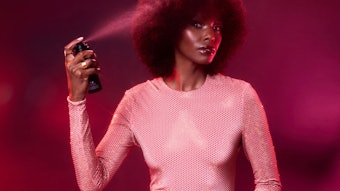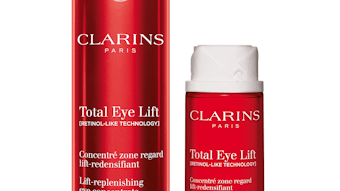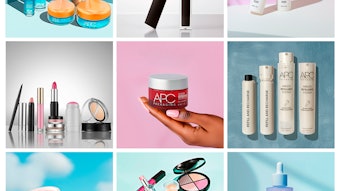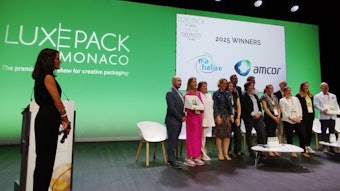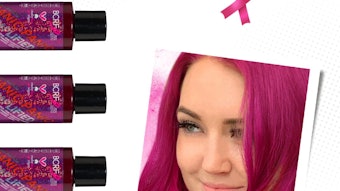- Even in a rapidly evolving consumer landscape, samples are still a key marketing tactic. But some tweaks to the approach can help beauty brands make the most of sampling.
- Smaller editions of full-size products are picking up steam in the beauty sector, giving consumers the opportunity to select several iterations of a product.
- Beauty sampling programs are incredibly important in beauty sampling these days, so brands should look closely at these partnership options.
- Being able to share samples— and online reviews and thoughts on products—are also pushing sampling forward.
The world is changing fast and so are beauty consumers—this statement doesn’t come as a surprise to anyone. However, with new trends in everything from binge watching to beauty product consumption to everyday living, it is apparent millennials hold a fundamentally different view of life—a fact corroborated by Mintel’s “The Changing Face of Middle America” report. For example, younger generations are ditching cars. Car ownership and a driver’s license are no longer perceived as an initiation into adulthood—a ticket to freedom that many of us had once yearned for during the eternity of our teenage years. Ride sharing services like Uber and Lyft are all the rage now, and self-driving cars are being spotted on the horizon. Things are fast changing.
Regardless of changing media consumption behavior and evolving car culture among these millennials (ages 19 to 34), one thing is still apparent: Shows are still shows and cars are still cars. Consumption patterns may be changing but consumers are still consuming. Shopping for tangible goods won’t go away, just as cars will still be around whether they have a driver holding the wheel or otherwise.
And even though these younger generations are increasingly suspicious and YouTube-dependent for all the product knowledge there is to be had, millennials also are curiously hungry for genuine experiences and interactions. Sampling can bridge the virtual and tactile, staging a platform for a positive consumer-product experience, as well as providing an opportunity for education. In the beauty and personal care arena, samples continue to reign as the new black.
Sample Landscape
At the 2014 Cosmoprof North America event in Las Vegas, Andrea Koons, executive director and global marketing with Murad, emphasized the importance of sampling as an effective promotional device. She said it is Murad’s second-largest marketing-related financial investment, following only the company’s ad spends.
Anecdotally, as a contract filler, I continue to witness the growing demands for single-dose sample foil packets from beauty brand owners large and small. They accounted for nearly 40% of finished goods units produced by our company in 2013. In this landscape of abundance in sample packets, the challenge is uniquely differentiating your sample packaging from the rest of the pack—and that’s just the start.
Small Is Big
Trina Luong, creative director and principal at Los Angeles-based graphic design agency The Yellow Loft, speaks of the basic and primary challenge of designing effective creative on a sample package. In addition to the design restrictions of regulatory requirements, Luong says the small real estate on the sample package still needs to clearly communicate what the sample is and what it does. Also, the packaging should effectively reflect the look and feel of its full-size counterpart.
Luong also notes the trend in which some full-size products are becoming increasingly smaller—a “mini-fication” phenomenon. Luong sees this as being both beneficial and challenging. For consumers, smaller retail units make it easier for them to purchase and actually finish a product, instead of, say, half-used lipsticks getting lost deep inside a bag. In addition, these mini products are presented with an opportunity to buy multiple varieties, colors, shades, scents and functions. For beauty brands, the ability to offer secondary or tertiary hero items in the line at a smaller size may contribute to selling more units.
These “mini-fied” retail products also can be found elsewhere in store aisles beyond the beauty and personal care area. In food and beverage, Keurig’s K-Cups have been established as the de facto single-serve coffee solution, replacing many conventional coffee makers and French presses. Also, Coca-Cola’s mini cans, at a little less than half of the U.S. standard 12 ounce can’s volume, are slowly increasing their footprint on the shelves of grocery stores and convenience markets—and expanding the Coca-Cola’s product offerings. And for both of these packaging concepts, the idea seems to be about having just enough, echoing the same chorus sung by the mini beauty items. In addition, these products are priced at a premium; an eight-pack of mini cans, for example, can be more expensive than a 12-pack of regular-sized cans.
As a frequent shopper herself, Luong notes that while she is excited about such miniature prospects, she’s also concerned about excessive packaging and waste. How beauty brands, designers and packaging suppliers can work together to improve the sustainability of small packaging without sacrificing its aesthetics will be a worthwhile challenge.
Boxed Beauty Samples
Interestingly enough, as full-size beauty products are becoming smaller, sample products that are bigger also are stepping into the spotlight. The line between the smallest of retail offerings and so-called deluxe samples are blurring—converging may be a better way to look at it.
Thanks in large part to the explosive numbers of monthly subscription box businesses, these deluxe samples are something consumers are becoming increasingly more accustomed to and expect. The deluxe samples must appear substantial. They must provide multiple application/treatment opportunities for the subscribers to experience the brand and its product in a more meaningful manner. Then, should the product prove itself worthy in the eyes of the beholder, the subscribers are converted beyond loyal consumers into brand evangelists.
Brands can consider beauty box partners such as Birchbox, Glossybox and Ipsy as an extension of their own marketing programs. Elian Pres-Gurwits, president and managing director of Glossybox, describes Glossybox’s business and focus on prestige beauty products as a holistic, online and offline consumer-centric product consultation. By working with these kinds of marketers, beauty brands can extend their reach and harness the power of the online social influences they command. This influence is often built from the bottom up by their subscribers, and many of these subscribers aspire to be the next big online beauty expert.
Seeking Social Opportunities
As experiential sampling programs continue to grow, their subscriber base show no signs of atrophy, and samples themselves must evolve quickly and creatively in order to leverage social influences and maximize brand loyalty. Sarah Jindal, senior innovation and insight analyst for beauty and personal care at Mintel, shared some of her insight on brand loyalty in the anti-aging skin care category. According to Jindal, although there are no clear answers, there are two prevailing school of thoughts: “One is that in such a crowded and confusing landscape, consumers are looking to their tried-and-true brands for new innovative products, thus strengthening brand loyalty. On the flip side, you have consumers that are happy to try anything and everything, and brand does not necessarily come into play when making choices.”
For the consumers in the latter camp, one way to reach out to them and get them to try products is through social influences. Jindal notes, “Because there are so many products available, [consumers] often rely on a ‘friend,’ whether real or virtual, to help them. And if someone has used that product before and can lend some insights, that is a big time-saver. [Those who post] blogs and YouTube videos are big [influencers], as they try products and post reviews and opinions on products. And because they are ‘average consumers’ and not brand ambassadors, their opinions are valued.”
How then can sample packaging be designed to truly embrace and enhance social experiences? Here’s one practical idea that I’d like to leave you with: At the 2014 Luxe Pack New York event, Benjamin Punchard, global packaging insight director at Mintel, shared a unique packaging concept he observed. Originally conceived by Ogilvy & Mather for Coca-Cola, it is an iconic Coke can that splits into two smaller cans for sharing. Dubbing it as “I See Double,” Punchard suggested that this packaging feature—allowing sharing experiences between two people—could be applied to beauty products as well. By the same token, the concept should work for sample packaging. Imagine a simple foil packet perforated in the middle that splits into two applications. It’s nothing that anyone familiar with multiple dosage packaging hasn’t seen, sure, but it is now purposed for sharing with a friend. Let consumers share their love and your samples.
As long as sample packaging is designed to be relevant to the fast-changing lifestyles, samples will have a place in every beauty brand’s marketing program. In other words, samples will still be the new black.
Originally from Tokyo, Moto Okawa is currently serving as a marketing manager for Diamond Wipes International, a southern California-based contract manufacturer specializing in wet wipe production, sheet mask packaging and sample packet filling. He also teaches art and design classes as an adjunct professor at Azusa Pacific University. Okawa holds an MFA in visual art from Claremont Graduate University. He received his bachelor of arts in art and trained in psychology and marketing at Azusa Pacific University.
